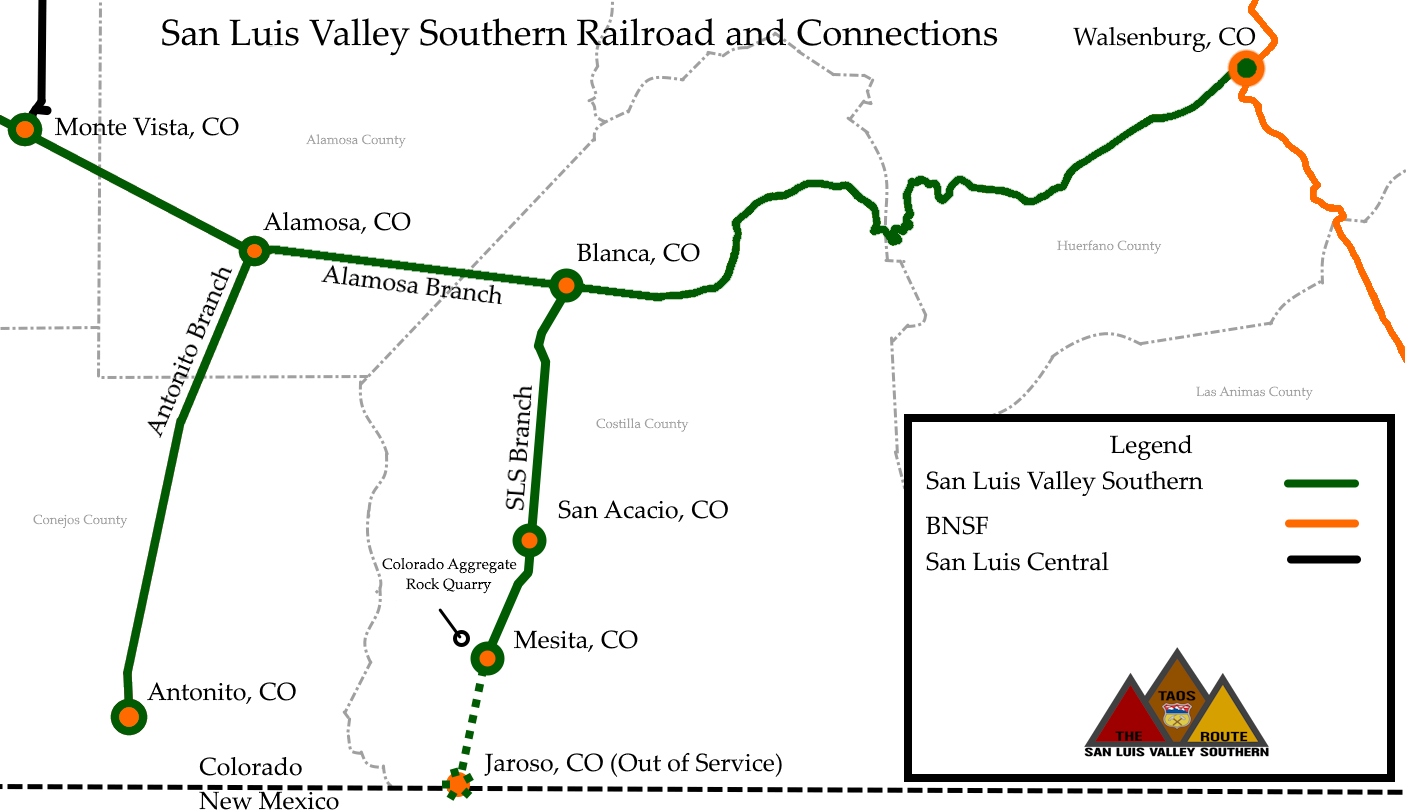San Luis Southern
A Quick History
Putting the entire history of the San Luis Southern here would take longer than I ever have and would basically plagerize an already great book on the line. But some history, real and fake, will help make sense of what I plan to model. The San Luis Southern was founded by the Costilla Estate Company in 1910. This land developer owned two signifigant former spanish estates in the San Luis Valley. This is located in a flat depression with the continental divide to the west and north, the offshoot Sangre de Christo mountain range to the east, and to the south the mountain ranges of New Mexico. The Denver and Rio Grande had already built its standard gauge line to Alamosa, located about center of the area. To the east lies the town of Blanca, Colorado which is where the Rio Grande would connect to the San Luis Southern. As built the San Luis Southern was a 30 mile main line between Blanca and the future townsite of Jaroso located on the CO-NM border. To give this railroad a reason to exist, Costilla Estates planned 3 towns along the line and sold farm land around them. However, the people never came. The San Luis Valley is DRY. So dry the only thing currently grown there is potatos and sugar beets. The land is not even suitable for grazing cattle. As such the railroad soon went bankrupt. And right before it looked like things would turn around again in the 1950s, it went bankrupt again. It was then bought by Blanca locals and cut back from 30 miles to half a mile. All centered around a transload facility for the owners lava rock company and a lettuce pre-shippent plant. At this same time they built their own diesel. A contraption consisting of a tender, a tractor engine, a truck axle, and several feet of heavy duty drive chain. By the 90's it died again, this time for good.
However, I decided to take it a different route. Instead of abandoning it all, keeping the Line to Mesita, about half way down the line, would have kept the gravel iterchange right next to the quarry. And then by the 90s instead of dying off, the SLVS is just starting to thrive. And fast forward to 2017 is about to buy the Alamosa line from bankrupt operator San Luis Rio Grande.
